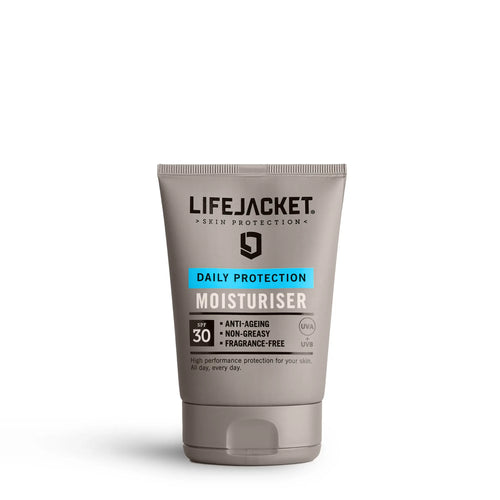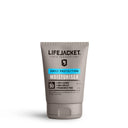Introduction
Long, warm days spent outside are now firmly behind us.
Unless you lived in a cave this summer (or stayed in the UK!), your skin will have been on the receiving end of a steady and sustained UV boost over the past few months. Generalising (with some degree of confidence), spring and summer usually means more time spent outside with less clothing, explaining the added dose of ultraviolet.
In addition, there's the compounding effect that summer rays are also more intense.
However, it's worth clearing up a common myth. UVA makes up about 95% of the UV that reaches the Earth’s surface and penetrates more deeply into the skin than UVB. While UVA levels are steadier throughout the year compared to UVB, they still vary with factors like season, time of day, and location. This consistency is one reason daily skin protection matters year-round, even when UV feels weaker.
The remaining 5% of UV that reaches your skin is UVB. These rays are very powerful and peak in strength during summer months. UVB causes visible skin damage in the form of sun burn - that classic image of summer - as well as deeper-lying skin damage.
Understanding UV exposure
Prolonged exposure to UV radiation can lead to various skin issues, including sunburn, premature ageing, and most importantly, an increased risk of skin cancer.
Most skin cancers are triggered by UV light. UV rays can cause DNA damage that triggers mutations in certain skin cells, causing them to multiply rapidly and form tumours.
The damage from UV exposure is cumulative and increases your skin cancer risk over time. Your body can repair some of the DNA damage caused to skin cells but not all of it. It's the un-repaired damage that can accumulate and trigger mutations.
Preventing UV from bombarding your skin always remains the best defence from this. That's to say: daily UV protection, wearing UPF fabrics and applying high factor sunscreen in strong sunlight. But we recognise incidental exposure is inevitable and that it's impossible to wind the clock back and un-do bad behaviour from the past. This is exactly why it's so important to check your skin...
Be regular to catch problems early
Fundamentally, if you develop a skin cancer problem, it's vital to catch it early.
Ideally, you would check your skin every 3-6 months and you're looking for signs of damage (see what that means later). That's why, after sustained summer sun, we think this is a particularly good moment in the calendar to check in on yourself.
What to look out for?
Typical signs of non-melanoma skin cancers include a lump, sore or spot or a new and persistent discoloured/red patch on the skin. If this persists beyond a few weeks and slowly progresses, it should be looked at quickly.
The more dangerous melanoma can be harder to notice because changes are often subtle and easily missed, particularly if you have lots of moles. In addition, while melanomas can develop from existing moles, about 70% appear as new marks on the skin, further emphasising the need to check your skin regularly.
A new mole in adult life should be treated with caution, particularly if it's on the sole of the foot, palm of the hand or under a nail. The same is true of existing moles that have changed or stand out from others.
How to do a skin check?
Performing a skin check is a straightforward process that can be done from the comfort of your own home. Here's a simple guide to get you started:
- Find a well lit room. Get help or use a large wall mirror and hand mirror.
-
Working from top to bottom, start with the face: Use a mirror to inspect your face, paying close attention to your nose, lips, ears, and the area around your eyes.
- Inspect upper arms, elbows, forearms, both sides of your hands (including fingernails and palms), chest, sides and stomach.
- Inspect your torso and back: Use a hand-held mirror to get a clear view of your back, or ask for assistance from a partner.
- Lastly, check your legs and feet including your soles, under nails and in between toes
- Pay special attention to existing moles, freckles, and spots: Any changes can be a concern. Look for growing size, changing shape, new colours, bleeding, pain, crusting, red around the edges or itching. Use the ABCDE method to diagnose any possible problem areas.

- Be mindful of any new growths or lesions: While most skin growths are benign, any new or rapidly changing growth should be evaluated by a healthcare professional.
- Keeping notes and pictures on your phone so you can compare and contrast may be helpful even it it's a little cumbersome. Make a note of existing moles, their position and what they look like. Keeping an eye on new formations on the skin will be the hardest thing to achieve this way which is why you definitely will want help and some good, well lit, high resolution photos using a smartphone camera.
When to seek professional advice
While regular self-examinations are an invaluable tool, they should not replace professional medical advice. If you notice anything that concerns you, consult a medical professional promptly.
If you're not certain or have even the slightest doubt, see a doctor straight away. They can refer you for further checks if necessary. Don't wait and don’t put it off. A doctor will not think you've wasted his or her time - they would rather you came forward.
Digital checking
If you wanted a digital way to check your skin and a simple way to log, track and map all skin marks, check out our official partner, Map My Mole.
Map My Mole is a British company and team of Consultant Dermatologists who have developed a special lens that fits easily over any phone camera.
The lens allows you to take incredibly detailed images of skin marks - akin to the images that can be taken in a dermatology clinic.
You download the Map My Mole app, upload your images, answer a few questions and then a Consultant Dermatologist will personally review everything before sending you a report in as little as 24 hours.
As a LifeJacket customer, Map My Mole are offering our customers a lens and skin check for £30. To qualify, you must buy at least one LifeJacket product. That allows us to send your lens (and instructions) with your order. Further checks can be purchased separately.
Conclusion
Skin cancer is the most common cancer in the world so don't be fooled into thinking it won't happen to you. On the plus side, if caught and treated early, skin cancer survival rates are extremely favourable.
We've heard too many horror stories from people who ignored a problem on their skin in the hope that it would go away. Don't be lazy or proud or stubborn. Look after yourself and get things checked if in any doubt. It's not worth the pain of leaving things too late.







